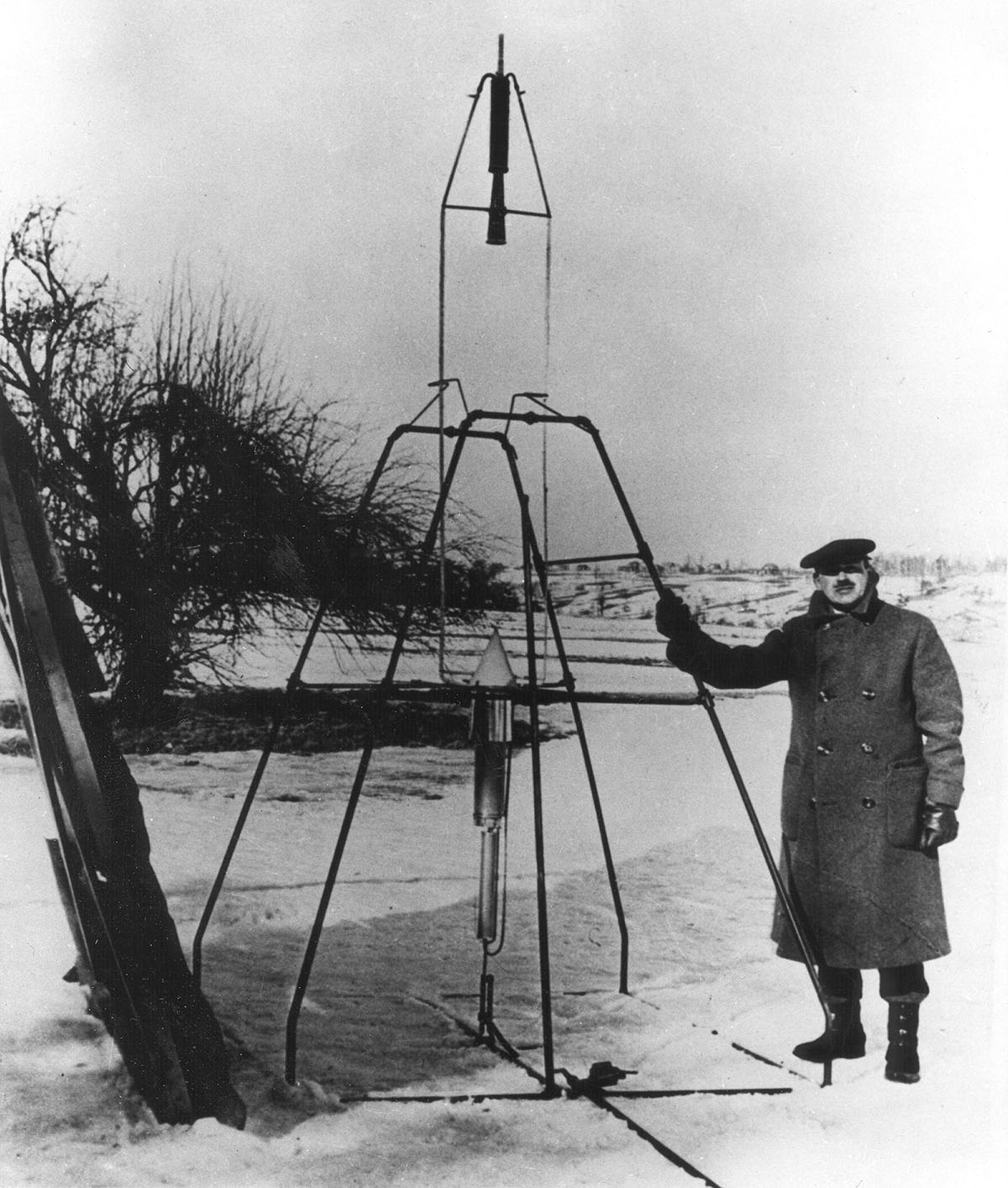Throwback Thursday: Robert Goddard Is Granted Another Patent for Rocketry

Robert Goddard with his first liquid oxygen-gasoline rocket in Auburn, Massachusetts. / Photo via Wikimedia/Creative Commons
Dr. Robert Goddard obtained a total of 214 patents during his lifetime. The Worcester native is remembered as the father of modern rocket propulsion—but during the time of his inventions, most people just thought he was crazy.
On June 9, 1931, he was granted a patent for “propulsion of aircraft.” According to NASA, the invention basically used a rocket to create thrust for an aircraft. The patent certainly contributed to Goddard’s pioneering work in rocketry, but for a while, he faced an army of skeptics. The commander of that army seemed to be the New York Times.
When Goddard first began experimenting with rockets, an editorial page feature published in 1920 shot him down:
“That Professor Goddard with his ‘chair’ in Clark College and the countenancing of the Smithsonian Institution, does not know the relation of the action to reaction, and of the need to have something better than a vacuum against which to react—to say that would be absurd. Of course he only seems to lack the knowledge ladled out daily in high schools.”
The Times denounced Goddard and the possibility of space travel in one swoop. However, the newspaper famously retracted the article on July 17, 1969, the night before Apollo 11 was scheduled to launch to the moon. Six years after that takedown, Goddard successfully launched the world’s first liquid-fueled rocket in Auburn on March 16, 1926.
In between introducing inventions and filing for patents, Goddard had to deal with the inhabitants of Auburn and Worcester. During his final launch in Auburn, Goddard’s 11-foot rocket roared into the sky. According to the National Park Service, the launch was successful for Goddard, but alarming for everyone else.
Observers thought the sight was an airplane engulfed in flames, and called for ambulances. Then, wire services put out reports that the rocket had exploded in the air. Bouts of bad publicity didn’t faze the inventor, though, and eventually Charles Lindbergh caught wind of Goddard’s efforts and helped him to gain the support of the Guggenheim Foundation for further research.
It wasn’t until 1942, when Germany launched the first missile that reached space, did other scientists recognize the importance of Goddard’s work. He passed away on August 10, 1945. Less than 20 years later, NASA dedicated the Goddard Flight Center in Greenbelt, Maryland, to the inventor.


